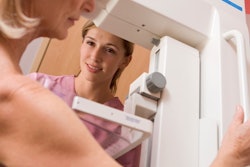
Sometimes it pays to take a second look. A study in the September issue of the Journal of the American College of Radiology found that secondary image interpretations changed patient management almost 20% of the time -- and tended to be more accurate.
The results suggest that these interpretations should be valued in the reimbursement arena, wrote a team led by Dr. Andrew Rosenkrantz of NYU Langone Medical Center.
| Discrepancy rates after secondary interpretations | |
| Type of imaging exam | Rate |
| Body | 43.8% |
| Breast | 39.9% |
| Pediatric | 35.5% |
| Musculoskeletal | 34% |
| Oncologic | 32.7% |
| MR | 31.2% |
| CT | 28.3% |
| Neuroradiologic | 23.8% |
| Trauma | 19.7% |
"Policymakers should consider these findings as they consider the value of, and payment for, secondary imaging interpretations," the group wrote.
In their analysis, Rosenkrantz and colleagues included 29 studies that represented 12,676 imaging secondary interpretations. They found an overall discrepancy rate of 32.2% for secondary interpretations compared with primary interpretations. Second reads changed patient management in 18.6% of cases (JACR, September 2018, Vol. 15:9, pp. 1222-1231).
Among the exams with different initial and secondary interpretations, the second read represented the accurate interpretation in 90.5% of cases.
"Imaging secondary interpretations commonly result in discrepant interpretations that are management changing and more accurate than initial interpretations," Rosenkrantz and colleagues wrote.



















